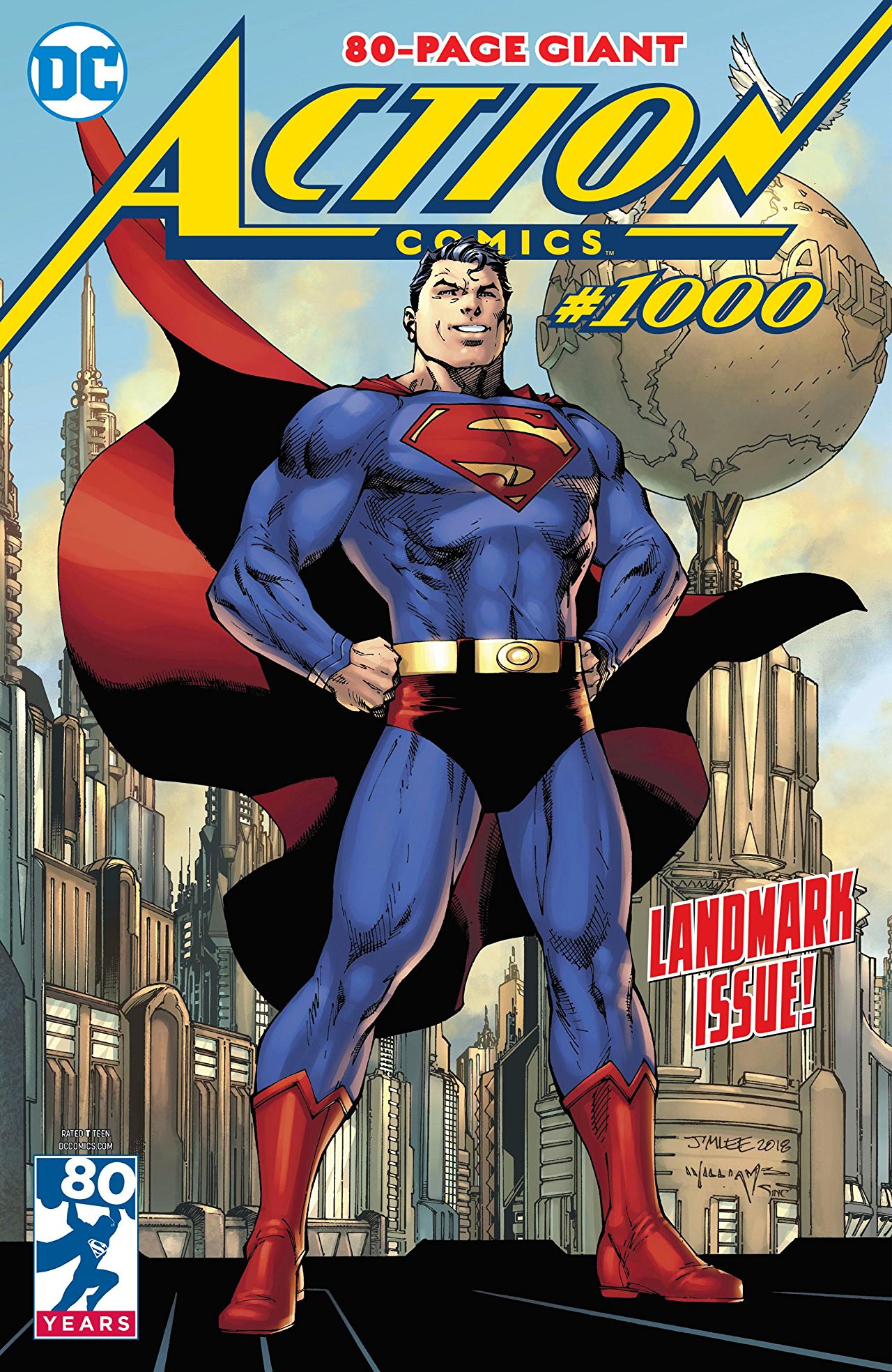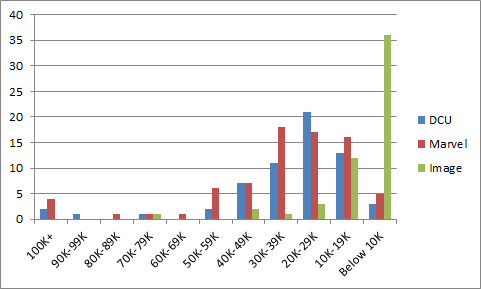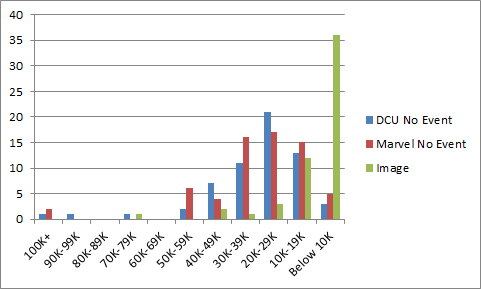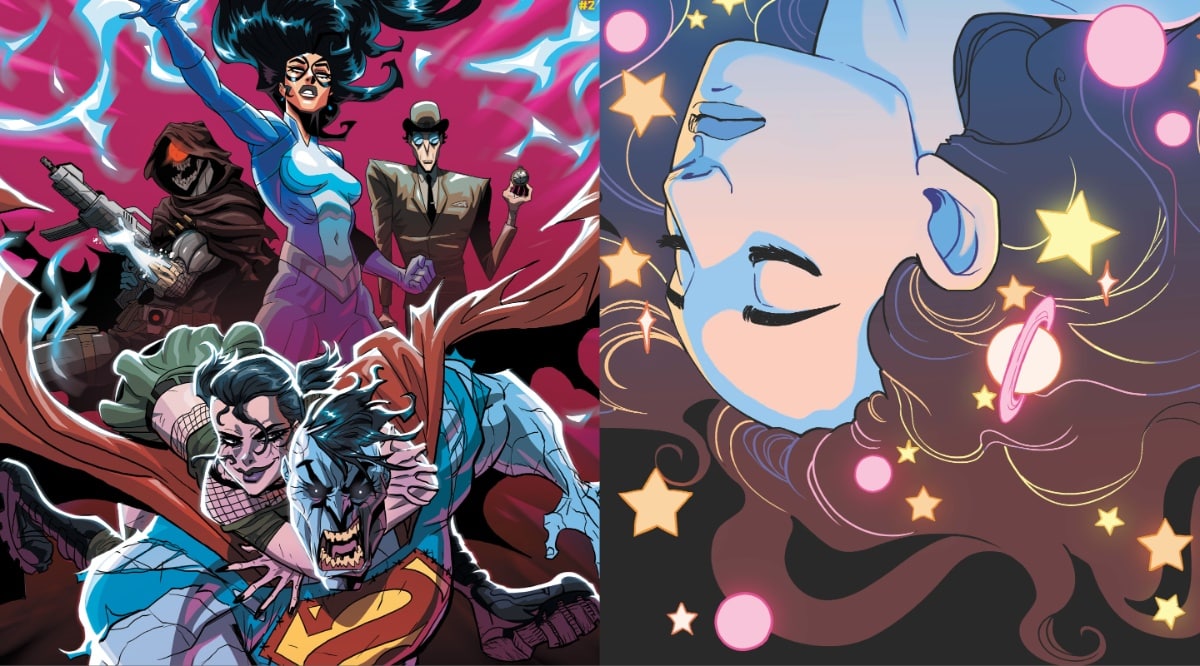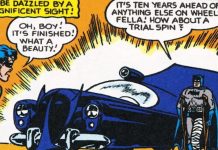And finally, the comparison chart of DC, Marvel and Image. So we can see where the biggest sales sit on the Direct Market Landscape.
Standard disclaimers: The numbers are based on the Diamond sales charts as estimated by the very reliable John Jackson Miller. These charts are pretty accurate for U.S. Direct Market sales with the following caveats: 1) you can add ~10% for UK sales, which are not reflected in these charts; 2) everyone’s best guess is you can add ~10% for digital sales – while some titles do sell significantly better in digital (*cough* Ms. Marvel *cough*), that’s the average rule of thumb; 3) it’s not going to include reorders from subsequent months, although reorders will show up in subsequent months if they’re high enough. So if you’re a monster seller in Southampton and it took the US audience 3 weeks to reorder, it’s probably not going to be reflected here.
What’s a sales band? It’s another way to have a higher level view of the market. The general idea is to divide the market into bands of 10K copies sold and see how many issues are in each band. How many issues sold between 90-99K copies, 80-89K copies, etc. etc. In very broad terms, the market is healthier when there are several titles selling in the 70K-100K+ range because titles that move a lot of copies give the retailers some margin of error on their ordering. When you see titles selling in the 20-29K band and especially below, there’s a pretty good chance a lot of retailers aren’t ordering those titles for the shelf (pull box/pre-order only) or minimal shelf copies at best.
From a total sales perspective, April was actually a better month than we’ve seen in a while. The chart doesn’t do it justice with Action #1000 going for ~450K copies domestically and Spidey cracking 233K for one of the month’s two issues of Amazing. And some new #1s to bolster it, with Image pitching in a couple of those.
So let’s have a look at it without the events and DC/Marvel #1s:
Really, we’ve seen worse lately. The problem is that most of the left side of that chart is going to be in flux in the next couple months. Amazing Spider-Man will be relaunching and we’ll just have to see if Spencer & Ottley can match the numbers that Red Goblin Fever has been putting up. (If the speculators really are a significant part of those orders, that’s going to be hard to match.) Oh, sure – Batman should be getting a nice bump through the wedding, but Batman: White Knight will be wrapping up soon.
DC is hoping that an assortment of Justice League and Superman titles start dropping in the 60K+ side of the chart, preferably further to the left. Marvel’s starting a big relaunch.
Right now, the 50K sales band is up a little – due to Marvel’s incremental gains. There’s a bit less selling under 10K. The middle is still the middle, although Image is showing a little more life in the last couple months.
That sudden influx of top list – especially Action – is a very good thing, even if it’s a short term situation. Since word on the street is those big order issues are selling through, that’s a big cash influx ahead of retailers needing to order a lot of new #1s and (even more scary from the retailer perspective) ordering big weekly Events sight unseen.
The real improvement we’re looking for is more titles moving over to 30K+, where the math on shelf copies works out a little better for store owners. Right now too much of that chart is still under 30K. It’s the next 3-4 months we’ll start to see if that happens.
- DC’s April 2018 Sales Distribution Chart
- Marvel’s April 2018 Sales Distribution Chart
- Image and the Independent Publishers April 2018 Sales Distribution Chart
Want to learn more about how comics publishing and digital comics work? Try Todd’s book, Economics of Digital Comics


